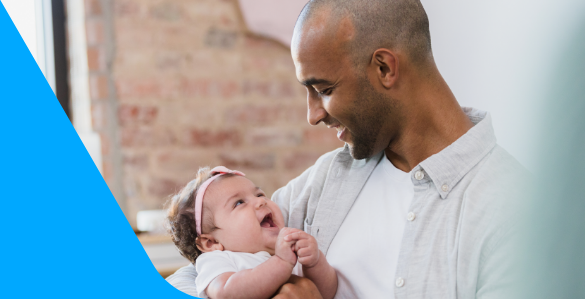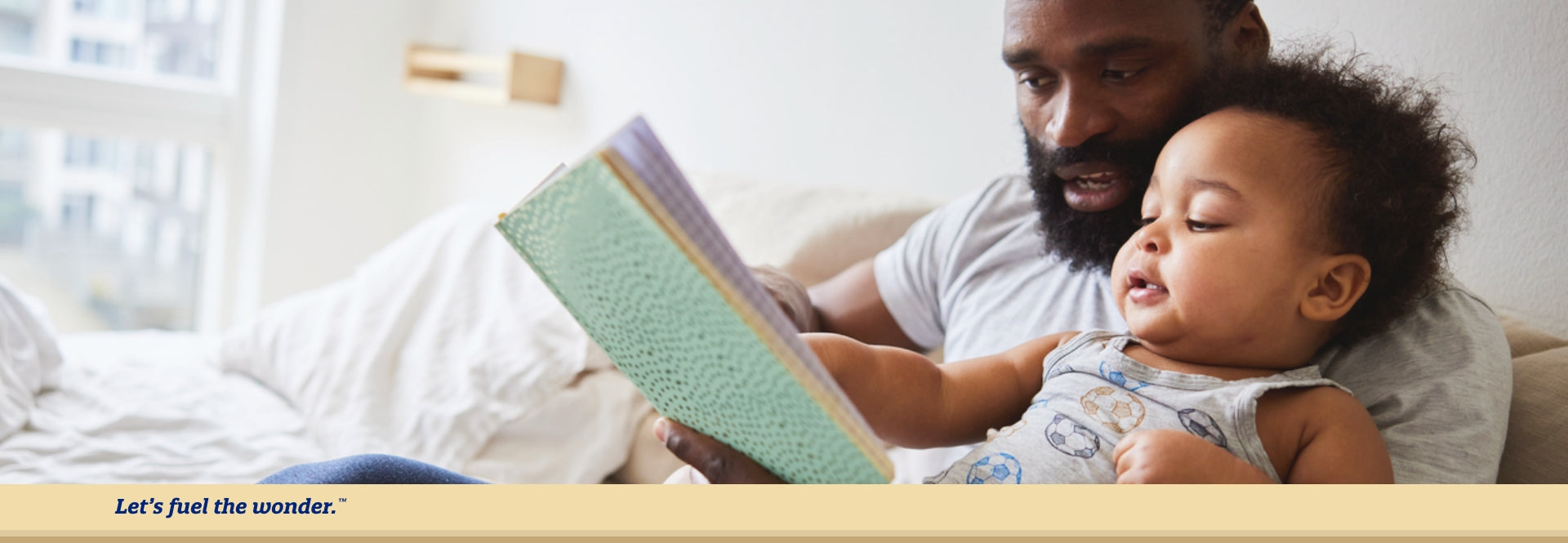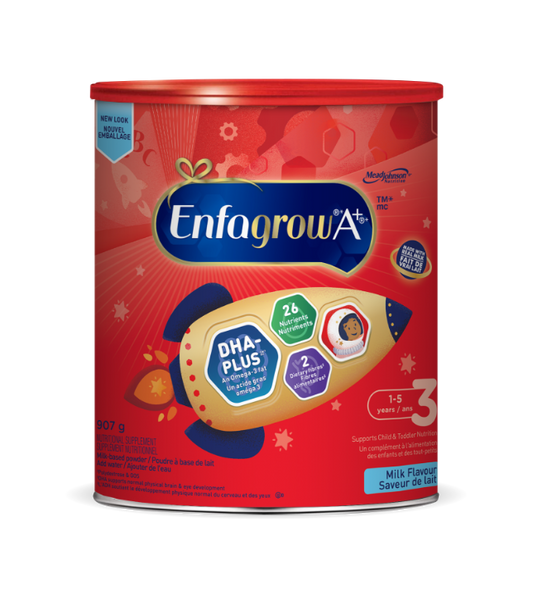Read about your baby’s brain development: 24 to 36 months
Right about now, the number of synaptic connections that make up your child’s neural network is at its peak. Her brain is twice as active an as adult brain and will remain so until she reaches puberty. From this age forward, her brain development won’t involve growing new neural connections as much as pruning those that already exist. This pruning happens naturally, as pathways that aren’t used begin to wither away. Of course, the brain is continuing to mature and grow as it strengthens the remaining pathways.
The way her brain develops is largely being shaped by her experiences, and it's equally important to provide nutritional support for her growing brain. Every thought she has and movement she makes exercises and strengthens the associated neuronal connections. For example, when she walks, runs, or jumps, the synapses involved in balance are bolstered, which is why the more she practices these actions, the better she becomes at keeping her balance. Here is a look at more of the ways your child’s brain is supporting advancement in all areas.
Cognitive
Parents of 2-year-olds are often baffled that their children’s thinking can seem quite sophisticated in some areas yet very immature in others. The inconsistencies aren’t imagined; the brain simply doesn’t develop in a uniform way, and some of the effects are most apparent at this age.
By your child’s second year, the brain regions associated with language and motor skills have undergone myelination, while those associated with memory, reasoning, and planning are less mature. Myelination—a process that coats the nerve endings with a fatty substance, which speeds up the transmission of nerve impulses, thus allowing for more complex cognitive function—occurs in different regions of the brain at different times. Most myelination is completed during the first two years of life, but in regions associated with the most complex, abstract thought, it continues through childhood, and possibly into adulthood. (5; 14; 22) What this means in practical terms is that while your child’s vocabulary explodes with new words and she’s quick to scamper up stairs and rocks, she doesn’t anticipate that taking a toy away from a dog can cause the animal to bark, and possibly bite.
Around this time you’ll also notice your child developing a concept of explicit memory, or conscious memory, enabling her to contrast the present with the past and the future. She’ll begin to tie memories to specific people and places and to talk about past and future events: “We went to the park yesterday. Let’s go again tomorrow.”
Motor
From her second birthday onward, your child will improve her motor abilities in a variety of ways, from mastering small muscle skills, like cutting her food and tying her shoes, to large muscle skills, like throwing a ball and climbing a playground structure. Developments in the prefrontal cortex improve her understanding of spatial relationships and cause and effect, and allow for better hand-eye coordination. When your child stacks blocks or fits shapes together, she’s learning more than just what goes where—she’s absorbing important concepts, like up and down, larger and smaller. When she catches a ball, she learns about cause and effect, and she uses sophisticated spatial perception to track the ball as it comes toward her.
Communication
Labeling is front and center at this age; your child wants to know the names of everything around her. This vocabulary-building process strengthens the synaptic connections in the frontal lobes, the portions of the brain primarily responsible for memory. By now she may know as many as 250 words, though she might not use all of them in day-to-day conversation. As the language regions of the brain become more integrated, she’ll begin to string together longer sentences, of three, four, and even five words.
Your child’s auditory skills are keeping pace with her verbal skills, due to the rapid myelination of nerves in the auditory cortex during this time. Three words you’ll likely be hearing often: “I,” “me,” and “mine.” That’s because your child is very excited by her new awareness of the distinction between herself and others—and she’s eager to let you know what she wants.
Social
Although words may be coming more easily to your child now, when it comes to emotional expression, she’s far less articulate. The terrible 2’s get their bad rap because of the profound frustration that toddlers feel—and act out—when the sophistication of their thoughts, feelings, and ideas outpaces their ability to communicate them to others. Gradually, the limbic system (the seat of emotion and impulse) and the prefrontal cortex (where planning and self-control originate) will work together in an integrated way, allowing for more successful social interactions.








